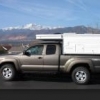On the subject of trickle charging....
I believe the trickle-charging in post 15 refers to features of the D250SA and SMARTPASS.
On page four of the manual, this is how it's described for the D250SA:
"Trickle charging of the starter battery from a solar panel. The D250SA trickle charges the starter battery from a solar panel at intervals of 3 seconds if the service battery is fully charged."
On the other side of page four, under SMARTPASS 120, it's described like this:
"Starter battery trickle charging. The service battery trickle charges the starter battery without assistance from the solar panel or alternator to compensate for the self-discharge of the starter battery. The service battery charges in 3-second pulses when its voltage is higher that of the starter battery and the voltage of the starter battery is low."
-----
On the subject of start assistance from the SMARTPASS-controlled service (house) battery (from the same page of the manual).....
"Start assistance. SMARTPASS 120 automatically connects the service battery to the starter battery for 10 sec to assist, if the starter battery on its own is unable to start the engine. After the start assistance function has been activated, SMARTPASS 120 will display a fault indication until starting has been achieved without using the start assistance function."
.














